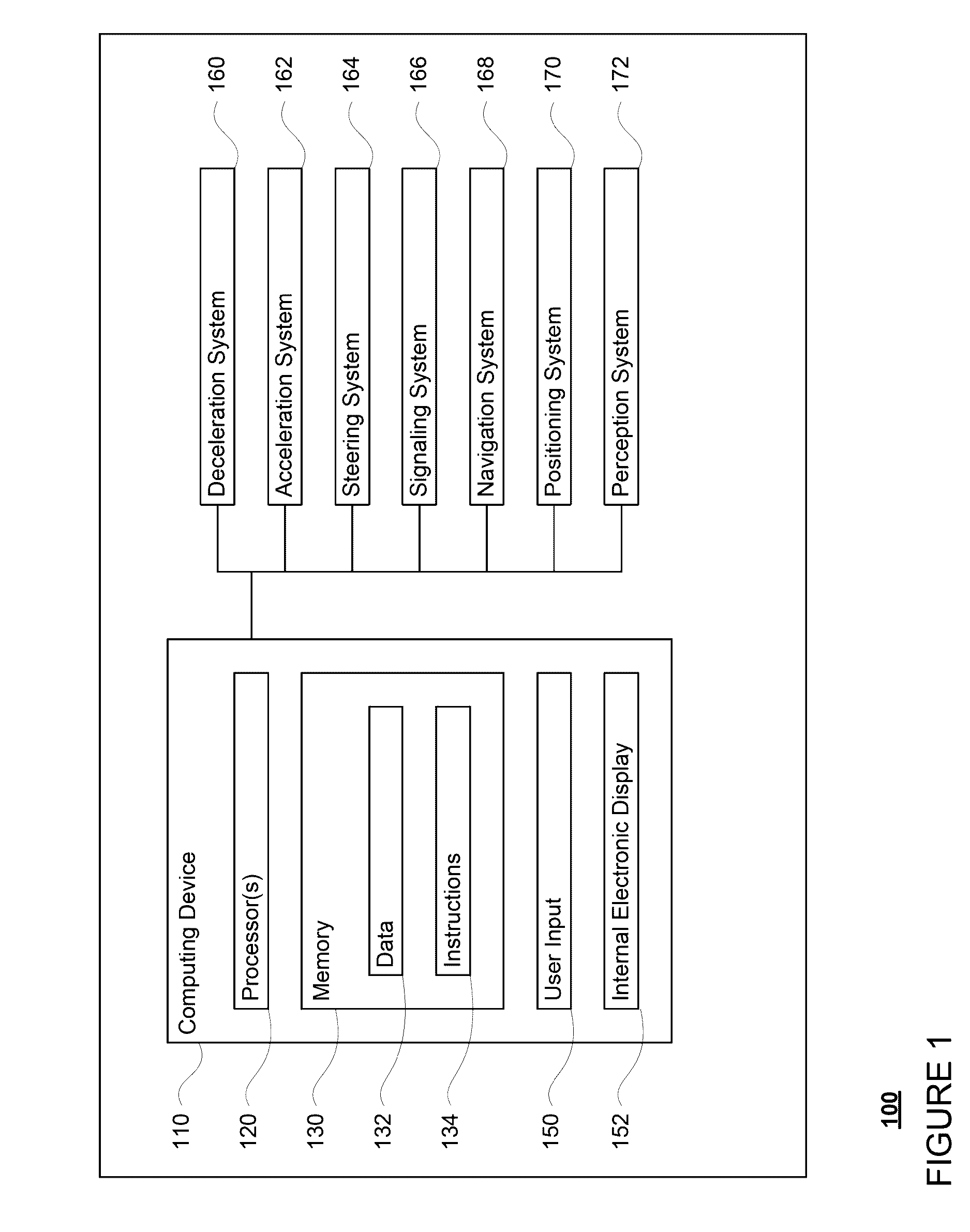Detecting street parked vehicles
a technology for detecting street vehicles and parking spaces, applied in the direction of distance measurement, process and machine control, instruments, etc., can solve the problems of trying to cut off a moving vehicle, collision or near miss, unnecessary braking, etc., and achieve the effect of low latency and high accuracy
- Summary
- Abstract
- Description
- Claims
- Application Information
AI Technical Summary
Benefits of technology
Problems solved by technology
Method used
Image
Examples
Embodiment Construction
Overview
[0017]An autonomous vehicle may determine whether a detected stationary vehicle is parked or part of the traffic flow. Vehicles that are in delineated parking spaces or against street curbs may be identified as parked. Additionally, vehicles that satisfy a number of other conditions may be labeled as possibly parked, tracked for a period of time, then labeled as parked if the conditions remain consistent with a parked vehicle. For example, if a car is stopped close to a curb, with a heading parallel to the street, with enough space on the other side for other vehicles to pass by, in a location where street parking is allowed, in a row of other vehicles similarly stopped, the system may determine that the car is parallel parked and label it as such. On the other hand, if a car is stopped close to an intersection where there is a stop sign, only for a short period of time, with a turn signal on, where the curb is painted red or yellow, the system may determine that the car is ...
PUM
 Login to View More
Login to View More Abstract
Description
Claims
Application Information
 Login to View More
Login to View More - R&D
- Intellectual Property
- Life Sciences
- Materials
- Tech Scout
- Unparalleled Data Quality
- Higher Quality Content
- 60% Fewer Hallucinations
Browse by: Latest US Patents, China's latest patents, Technical Efficacy Thesaurus, Application Domain, Technology Topic, Popular Technical Reports.
© 2025 PatSnap. All rights reserved.Legal|Privacy policy|Modern Slavery Act Transparency Statement|Sitemap|About US| Contact US: help@patsnap.com



